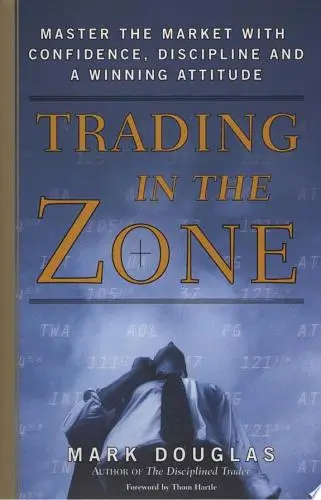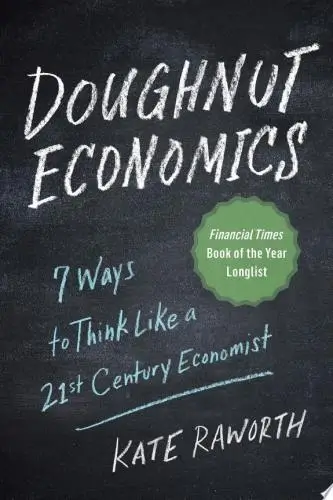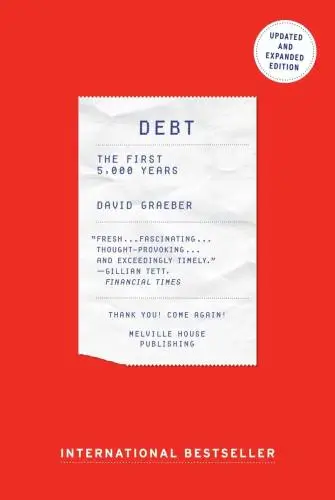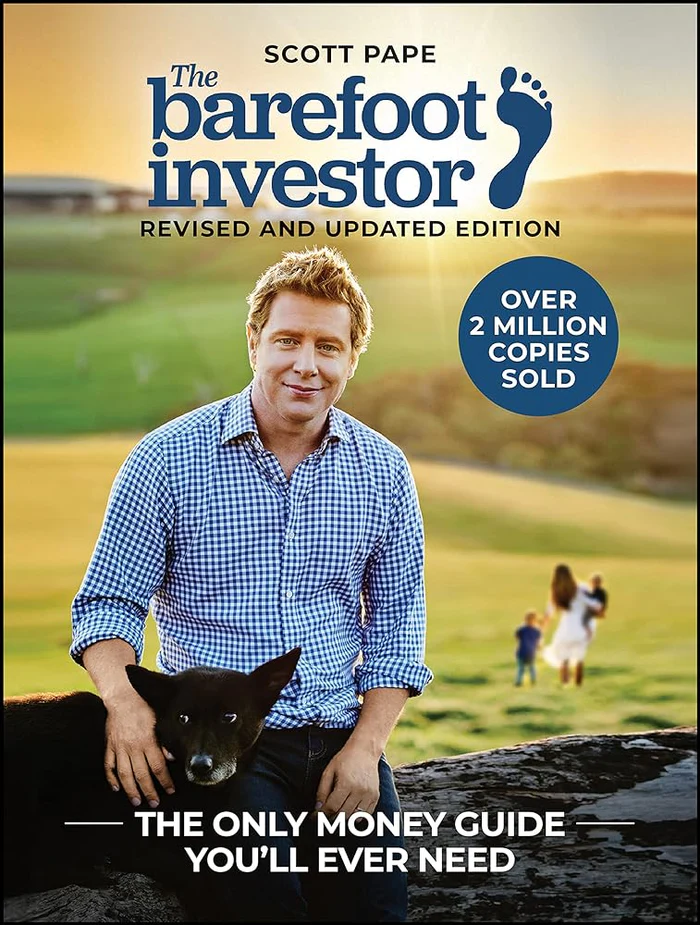The Little Book of Common Sense Investing
The Only Way to Guarantee Your Fair Share of Stock Market Returns
What's it about?
The Little Book of Common Sense Investing guides you through the essentials of low-cost index fund investing. Bogle, the founder of Vanguard Group, emphasizes the importance of keeping investment costs low and opting for the steady growth of index funds over riskier, high-fee investment options. You'll learn why betting on market averages through index funds often leads to better long-term returns than trying to outsmart the market. This book is a must-read for anyone looking to build wealth wisely and sustainably.
About the Author
John C. Bogle was the founder of Vanguard Group and a pioneer in low-cost investing, advocating for the index fund, which revolutionized the investment industry. His writings emphasize long-term investment, the importance of minimizing fees, and the value of simplicity in financial strategies, making significant contributions to personal finance literature.
10 Key Ideas of The Little Book of Common Sense Investing
Embrace the Power of Low-Cost Index Funds for Long-Term Wealth Building
Investing in low-cost index funds is a cornerstone strategy for long-term wealth accumulation.
These funds aim to replicate the performance of a market index, such as the S&P 500, thereby offering broad market exposure.
The primary advantage lies in their low expense ratios compared to actively managed funds.
Over time, the lower fees can result in significant savings and potentially higher returns due to the compounding effect.
Additionally, index funds typically exhibit lower turnover rates, leading to more efficient tax management for investors.
Learn DeeperStart by researching and selecting a few low-cost index funds that track major market indexes like the S&P 500 or the Total Stock Market. Look for funds with the lowest expense ratios to maximize your savings.
Allocate your investments based on your risk tolerance and financial goals. If you're younger, you might lean more towards stock index funds for growth. As you get older, gradually shifting some of your investments into bond index funds can help reduce risk.
Set up automatic contributions to your selected index funds. This can be done through your employer's retirement plan or a personal investment account. Automating your investments helps in building wealth consistently over time without having to actively manage your portfolio.
Keep a long-term perspective and resist the temptation to react to short-term market volatility. Index funds are most effective as a long-term investment strategy. Regularly review your investment allocation to ensure it aligns with your evolving financial goals but avoid frequent trading.
- Example
If you're interested in following the performance of the U.S. stock market, you might invest in an S&P 500 index fund with an expense ratio of 0.04%. This means for every $10,000 invested, you would only pay $4 annually in fees.
- Example
For a diversified approach, you could split your investment between a Total Stock Market index fund and an International Stock index fund. This way, you're not just tied to the performance of U.S. companies, but you also gain exposure to global markets, all while keeping costs low.
Understand the Futility of Timing the Market
Attempting to time the market by predicting its rises and falls is an exercise in futility for most investors.
This approach often results in buying high and selling low, the opposite of successful investing principles.
Market timing requires precise predictions about future events, which is nearly impossible consistently over time.
Instead, adopting a long-term investment strategy and maintaining a disciplined approach to investing, regardless of short-term market fluctuations, has proven to be more effective for wealth accumulation.
Learn DeeperStart with a solid plan: Before you invest a dime, have a clear investment strategy. This might mean sitting down with a financial advisor or doing some homework on your own. Your plan should include your financial goals, risk tolerance, and investment horizon.
Diversify your investments: Don't put all your eggs in one basket. Spread your investments across different asset classes (stocks, bonds, real estate, etc.) to reduce risk. This way, if one investment performs poorly, it's less likely to significantly impact your overall portfolio.
Invest regularly: Set up automatic contributions to your investment accounts. This could be monthly, quarterly, or whatever works best for your budget. Regular investing helps smooth out the highs and lows of the market, a strategy known as dollar-cost averaging.
Stay informed, but don't obsess over market news: Keep an eye on the market trends and economic indicators, but avoid making impulsive decisions based on short-term market movements. Remember, your investment strategy is built for the long haul.
Review and adjust your portfolio periodically: At least once a year, review your investment portfolio to ensure it's still aligned with your goals and risk tolerance. This might involve rebalancing your assets to maintain your desired asset allocation.
- Example
If you're saving for retirement 30 years from now, instead of trying to time the market, you might choose a mix of stocks and bonds that reflects your risk tolerance and invest a fixed amount every month into these assets, regardless of market conditions.
- Example
Imagine you've received a bonus at work. Instead of waiting for the 'right time' to invest, you decide to immediately allocate this extra money across your existing diversified portfolio, adhering to your long-term investment strategy and avoiding the temptation to time the market.
Recognize the Impact of Compound Interest on Investments
Compound interest is a powerful force in investing, where earnings on an investment generate their own earnings over time.
The key to maximizing compound interest is starting early and allowing investments to grow over a long period.
This concept underscores the importance of patience and long-term thinking in investing.
By reinvesting dividends and capital gains, investors can significantly increase the value of their portfolio, benefiting from both the initial investment and the accumulated earnings over time.
Learn DeeperStart Investing Early: The sooner you begin, the more time your investments have to grow. Even small amounts can grow significantly over time.
Reinvest Dividends and Capital Gains: Instead of taking these earnings out, reinvest them into your portfolio. This action accelerates the compound interest effect.
Choose Investments with Low Fees: High fees can eat into your earnings. Opt for low-cost index funds or ETFs to keep more of your investment growing.
Stay Consistent: Make regular contributions to your investments, even during market downturns. This consistency pays off in the long run.
Avoid Frequent Trading: Each trade can incur costs and taxes, which diminish the compound interest effect. Aim for a long-term investment strategy instead.
- Example
If you start investing $200 a month at an average annual return of 7%, after 30 years, you could have over $227,000, thanks to compound interest.
- Example
By automatically reinvesting dividends from a stock or mutual fund, you purchase more shares without any effort, increasing the amount of future dividends you'll receive.
The High Cost of High Fees: How Expenses Erode Your Returns
Investment fees, including management fees and administrative costs, can significantly erode potential returns over time.
Even seemingly small differences in expense ratios can amount to substantial sums when compounded over many years.
High fees do not guarantee superior performance and often lead to underperformance relative to lower-cost index funds.
Investors should pay close attention to the fees associated with any investment and prioritize low-cost options to maximize their returns.
Learn DeeperReview your current investments to identify the fees you’re paying. This can often be found in the investment’s prospectus or by logging into your account online.
Compare fees among similar investment options. For instance, if you’re invested in a mutual fund, check the expense ratios of comparable index funds.
Consider switching to lower-cost investments if you find that you’re paying high fees. Index funds are often a good choice due to their typically lower expense ratios.
Ask about fee structures before investing in new funds. Don’t hesitate to reach out to the fund manager or customer service to get clarity on all fees involved.
Monitor your investments regularly for any changes in fees. Investment companies can change their fee structures, so it’s important to stay informed.
- Example
If you’re currently invested in a mutual fund with an expense ratio of 1.5% and you find an index fund with a similar investment strategy but with an expense ratio of 0.2%, switching could save you a significant amount in fees over time.
- Example
Before investing $10,000 in a new fund, you notice the expense ratio is 0.75%. By choosing an alternative fund with a 0.25% expense ratio, you could potentially save hundreds or even thousands of dollars in fees over the course of your investment.
Diversification: The Investor's Best Defense Against Risk
Diversification is a risk management technique that mixes a wide variety of investments within a portfolio.
The rationale behind this approach is that a portfolio constructed of different kinds of investments will, on average, yield higher returns and pose a lower risk than any individual investment found within the portfolio.
Diversifying across asset classes (stocks, bonds, real estate, etc.) and geographically can help reduce the impact of poor performance in any single investment.
Learn DeeperStart by assessing your current investments. Take a look at what you already own. Do you have all your money in just one type of investment, like stocks or a single mutual fund? If so, it's time to think about spreading your investments out.
Diversify across different asset classes. Consider adding bonds, real estate investment trusts (REITs), and possibly commodities to your portfolio. Each of these asset classes reacts differently to market conditions, which can help stabilize your returns over time.
Don't forget to diversify within asset classes too. For example, if you're investing in stocks, don't just stick to one sector like technology or healthcare. Spread your investments across different sectors such as utilities, consumer goods, and financials.
Consider geographic diversification. Investing in international markets can offer growth opportunities and help reduce the risk of being overly concentrated in your home country's economy.
Regularly review and rebalance your portfolio. Over time, some investments may grow faster than others, leading to an imbalance in your diversification strategy. Periodically rebalancing your portfolio helps maintain your desired level of diversification.
- Example
If you currently own only tech stocks, consider adding some industrial and healthcare stocks to your portfolio, along with a mix of government and corporate bonds. This way, if the tech sector takes a hit, your other investments can help offset the losses.
- Example
Imagine you live in the United States and all your investments are in U.S. companies. By adding investments in European, Asian, and emerging markets, you can reduce the impact of a downturn in the U.S. economy on your overall portfolio.
Deeper knowledge. Personal growth. Unlocked.
Unlock this book's key ideas and 15M+ more. Learn with quick, impactful summaries.
Read Full SummarySign up and read for free!
The Little Book of Common Sense Investing Summary: Common Questions
"Time is your friend; impulse is your enemy." This quote encapsulates the essence of The Little Book of Common Sense Investing by John C Bogle, the founder of Vanguard Group. The book emphasizes the importance of long-term investing in low-cost index funds to achieve steady growth over time.
Bogle's straightforward writing style and emphasis on simplicity make complex financial concepts accessible to readers of all levels. His advocacy for passive investing over active trading challenges conventional wisdom and prompts a reevaluation of investment strategies. Although some parts may feel repetitive, Bogle's core message about staying the course, thinking long-term, and keeping costs low remains convincingly powerful.
Overall, The Little Book of Common Sense Investing is a must-read for anyone looking to navigate the world of investing with a practical and sound approach. If you enjoyed books like The Intelligent Investor by Benjamin Graham or A Random Walk Down Wall Street by Burton Malkiel, you'll appreciate Bogle's timeless wisdom in this book.
Experience Personalized Book Summaries, Today!
Discover a new way to gain knowledge, and save time.
Sign up for our 7-day trial now.
No Credit Card Needed

Similar Books

The Art of Spending Money
Morgan Housel
Trading in the Zone
Mark Douglas
Doughnut Economics
Kate Raworth
A study guide for Barbara Ehrenreich's "Nickel and Dimed: On (Not) Getting By in America"
Gale, Cengage Learning
Bitcoin For Dummies
Prypto
Debt
David Graeber
The Barefoot Investor
Scott Pape
Money Has No Value
Samuel A. Chambers
Financial Peace
Dave Ramsey
Capital in the Twenty-First Century
Thomas PikettyTrending Summaries

Peak
Anders Ericsson
Never Split the Difference
Chris Voss
Smart Brevity
Jim VandeHei
The Psychology of Money
Morgan Housel
The First 90 Days
Michael D. Watkins
Atomic Habits
James Clear
Thinking, Fast and Slow
Daniel Kahneman
The Body Keeps the Score
Bessel van der Kolk M.D.
The Power of Regret
Daniel H. Pink
The Compound Effect
Darren HardyNew Books

Job Interviews For Dummies®
Joyce Lain Kennedy
Job Interviews In A Week
Alison Straw
Handbook of Career Development
Gideon Arulmani
The Art of Spending Money
Morgan Housel
$100M Offers
Alex Hormozi
A Candle for Kiri
Edna Mae Holm
Principles of Marketing, Global Edition
Gary Armstrong
Serpent Rising: The Kundalini Compendium
Neven Paar
Feeling Is the Secret
Neville Goddard

